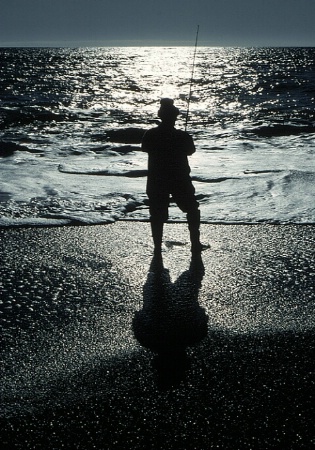Keeping Horizon Lines and Shorelines Level
How to Avoid Tilting Horizons:
by Kerry Drager
We've all seen - OK, we've all photographed - pictures in which a long, straight horizon line slants in one direction, making it appear as if everything is going to slide right out of the photo! Before you go out shooting seascape and landscape scenes, here are a few of the ways you can prevent a tilting horizon line or shoreline.

Dan on Beach
© Kerry Drager
All Rights Reserved
Photographing Level Horizons
- Use a tripod. It helps keep your camera steady - in any position you select - so you can compose your picture more precisely.
- Some SLR cameras accept interchangeable viewfinder screens. A particularly useful one is the architectural-style grid, which comes with etched lines (both horizontal and vertical) that assist with lining up horizons and assorted other compositional references.
- A bubble level often tips you off to any tilting. Some tripods come equipped with a level; otherwise, an add-on accessory is available that slips onto the camera's flash shoe. But remember: Such a bubble is NOT foolproof (see next item).

Seascape Silhouette
© Kerry Drager
All Rights Reserved
- Trust your eye: On occasion, the horizon may not look right, even though the camera appears perfectly level ... and even though the bubble level confirms it. In those cases, you may need to actually slant the camera ever so slightly in order to keep the image visually level. I've found that this sort of thing happens most often with slightly sloping ridgelines, lakes that include opposite shorelines, and similar scenes ... so that even though, technically, these lines should slant a bit, they actually appear tilted in the photograph. Thus, leveling them out would be recommended!
- After composing your shot, perform this last-minute task: Check the viewfinder to see if things look "right." Specifically: Is there the same amount of sky AND the same amount of land (or sea) on each side of the picture frame?
Lastly: Think of these horizon-line suggestions as take-it-or-leave-it guidelines that you consider thoughtfully, not as hard-and-fast orders that you follow mindlessly. For example, intentionally "rocking the photographic boat" - i.e., with a severe slant - could result in a visually striking "diagonal" image!
About the Author

To learn more about photography, explore the photography classes offered here at BetterPhoto.
